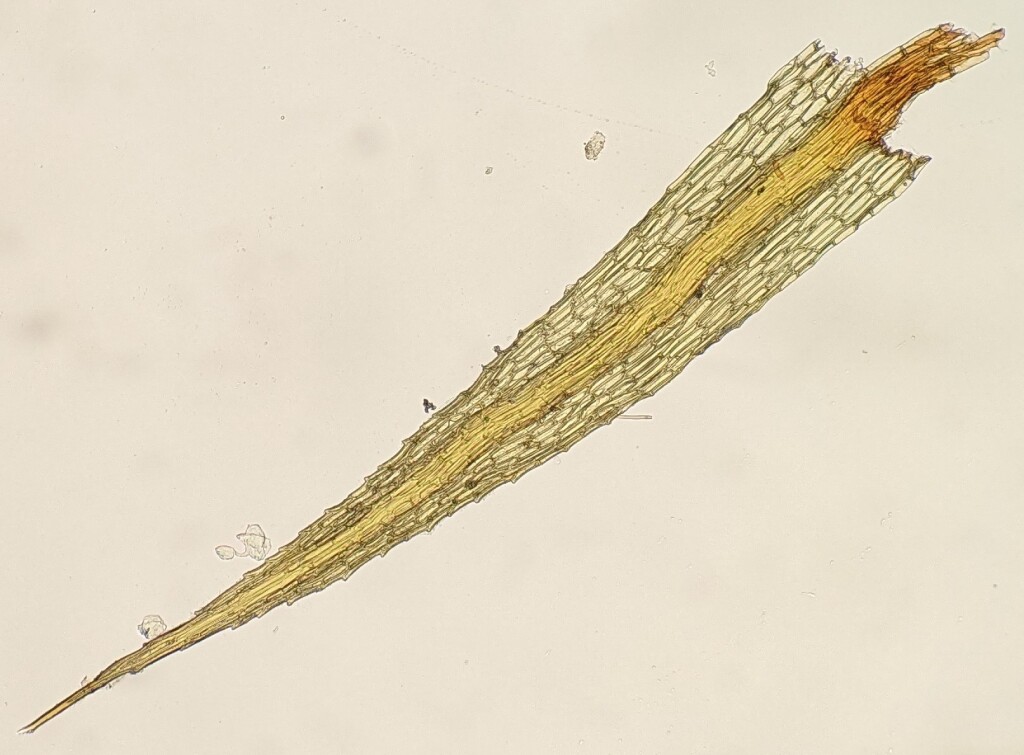Conostomum curvirostre
(Mitt.) Mitt.Autoicous. Dense tufts on soil and rock. Stems erect, 2–4 (–8) mm long, simple in sterile plants, branching near apex in fertile plants, pale brown, covered near base with yellow-brown rhizoids. Leaves in 5 ±distinct ranks, erect when moist, not altered when dry, lanceolate to triangular-lanceolate, 0.5–1.8 mm long, 0.1–0.3 mm wide; apices acuminate; costae long-excurrent to form an smooth hyaline awn; margins serrulate in apical half, narrowly recurved or plane, without a border; laminal cells oblong to linear, 20–55 μm long, 4–12 μm wide, unistratose, smooth to prorate; alar cells not differentiated. Setae 2–6 mm long, pale yellow-brown. Capsules erect or inclined, globose or nearly so, symmetric, 1–1.3 mm long. Opercula oblique-rostrate, 0.5–0.7 mm long. Peristome absent.
HNF, VAlp. In the alpine zone west from Lake Mountain, typically on bare ground between grass tussocks and near streams. Also NSW and ACT. New Zealand.
 Spinning
SpinningGilmore, S.R. (2006). Conostomum. Flora of Australia 51: 262–265.

